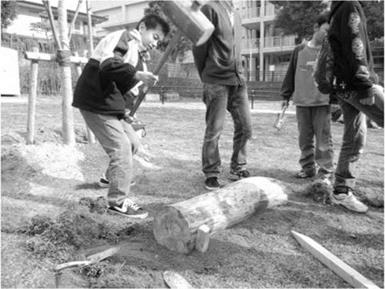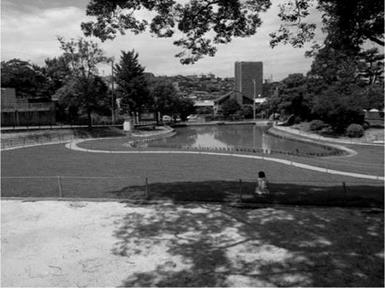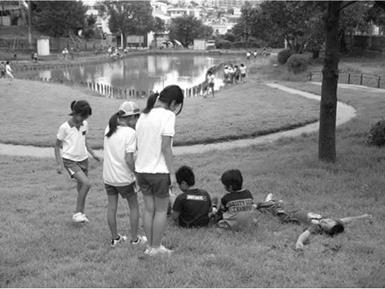“Process planning” (Isozaki 1970) was used in the planning and design phases of this project. This approach does not place emphasis on the finished object but allows changes to be made during the actual process and is thus a very flexible method of design. The children have learned about the existence of various ecosystems when playing in the park and through their participation in the various workshops. Children and teachers at the school, along with a number of local residents, have participated in the planning of the park, and their interest in it continues because they have actively participated in the development of an accessible environment while at the same time being active in proposing ideas for its future management (Fig. 5.10). “Process planning” would thus appear to be well suited for a long-term project such as a city park and school biotope (Ito et al. 2010) MFLP provides a variety of activities for the children as they are able to learn more about nature when they play in the park (Fig. 5.11). MFLP is thus considered suitable for the planning of a project such as a children’s playground, which takes a long time to become established. It was noticeable that children involved
|
Fig. 5.9 The children and the university students are cooperating and constructing the landscape elements together. (Photograph taken by Y. Shin, February 2011) |
|
Fig. 5.10 Completed site. (Photograph taken by K. Ito, April 2011) |
|
Fig. 5.11 Schoolchildren playing in the park. (Photograph taken by C. Takahashi, June 2010) |
themselves in a number of activities in the park. Some children enjoyed running around, jumping from one side of the edge of to the pond, or just sitting there and talking while others were observed trying to catch insects or just looking at the grass and flowers.
Fj0rtoft and Sageie (2000) have discussed the concept of affordances, and in this park the children interpreted the affordances and adopted them into functions for play. The children’s activities corresponded with Gibson’s theory of affordances (Gibson 1979), according to which the composition of the environment as function for use. According to his theory, perception of the environment inevitably leads to some course of action. Affordances, or clues in the environment that indicate possibilities for action, are perceived in a direct, immediate way with no sensory processing: examples include buttons for pushing, knobs for turning, handles for pulling, levers for sliding, etc. (Fj0rtoft and Ito 2010).
In this park, an example of this can be seen in the children’s idea to plant local plants in the park. As a result, it was suggested that the biotope could become one of a number of habitats for birdlife in this urban area. In a survey conducted in 2011, 12 species of terrestrial insects, 20 species of aquatic insects, and 8 species of birds were observed in the park. It is envisaged that the park will establish itself as one of a network of biotopes in this urban area.
In short, this city park not only provides the children with a place to play in a variety of ways but has also become a habitat for a number of living creatures such as birds, insects, and fish.






